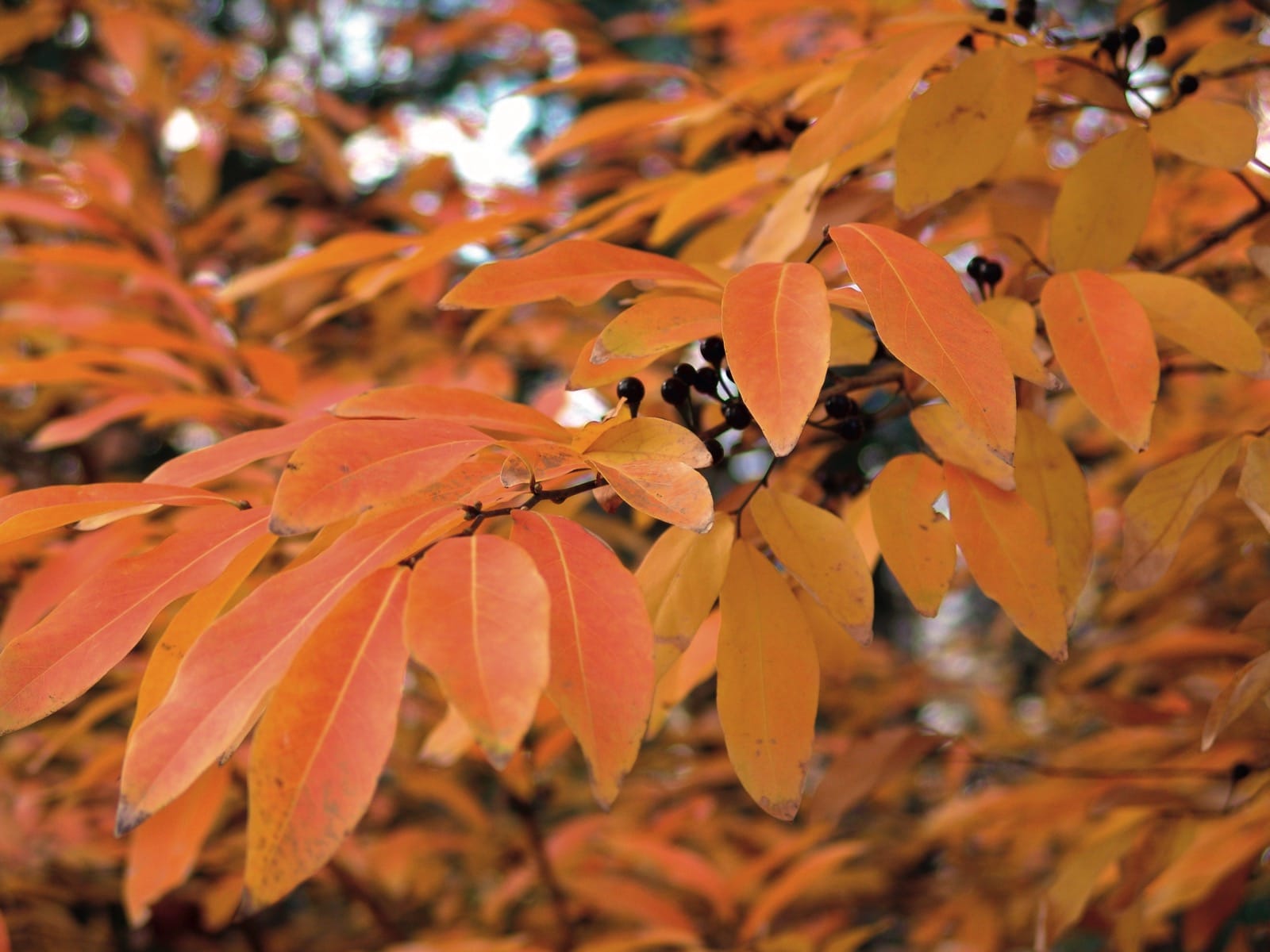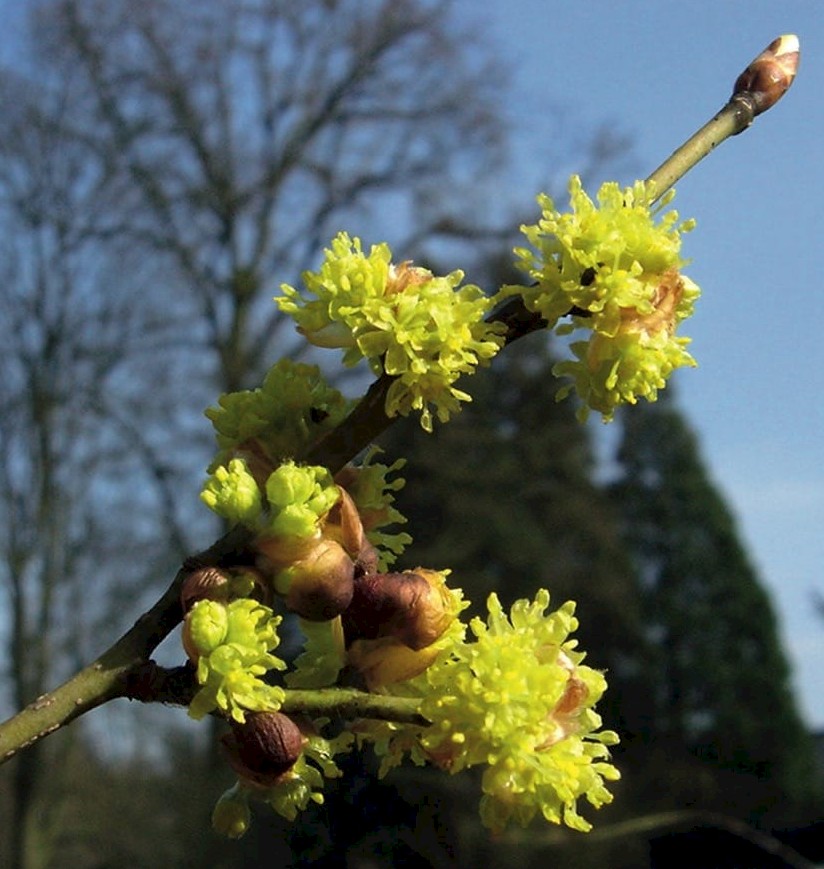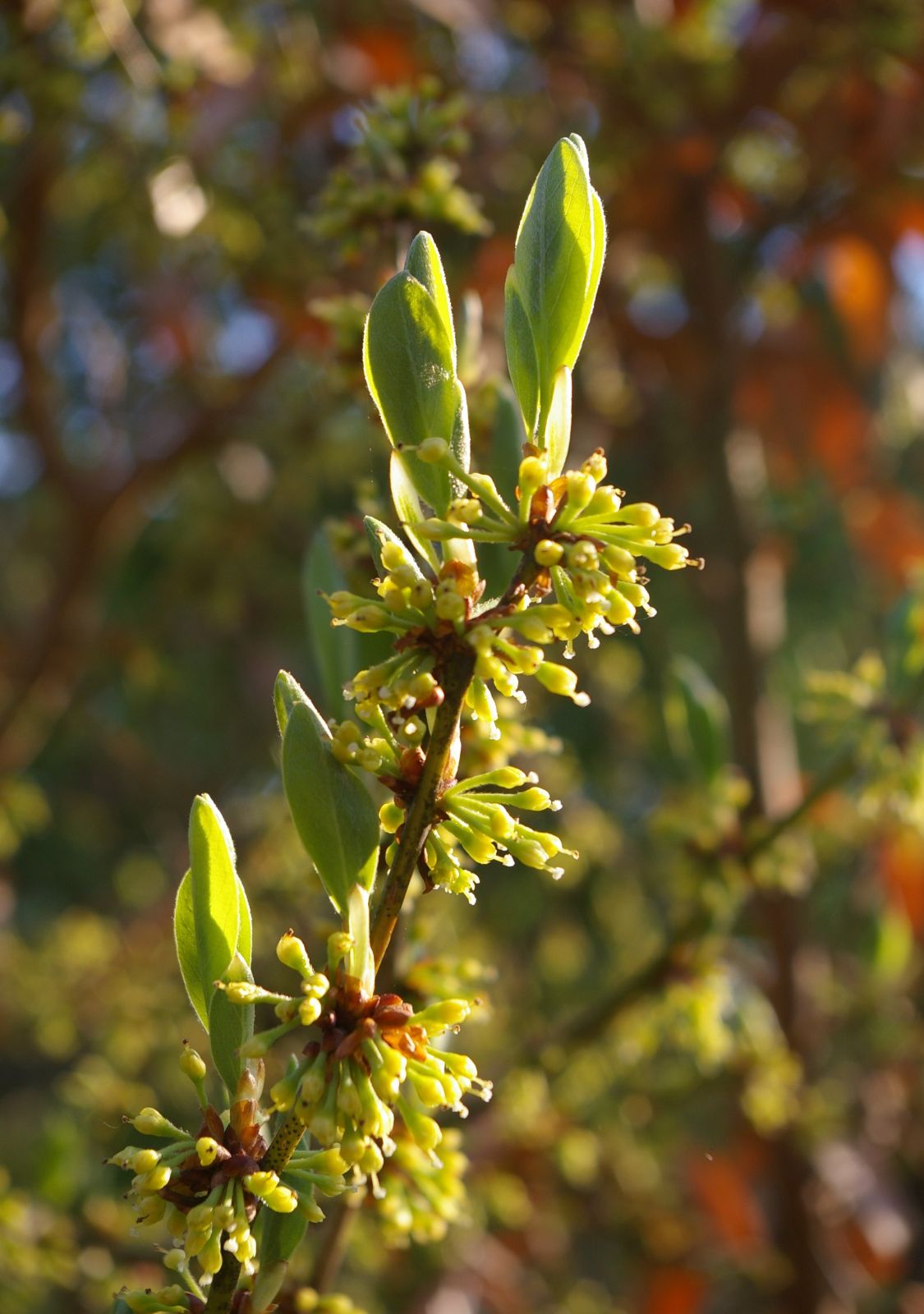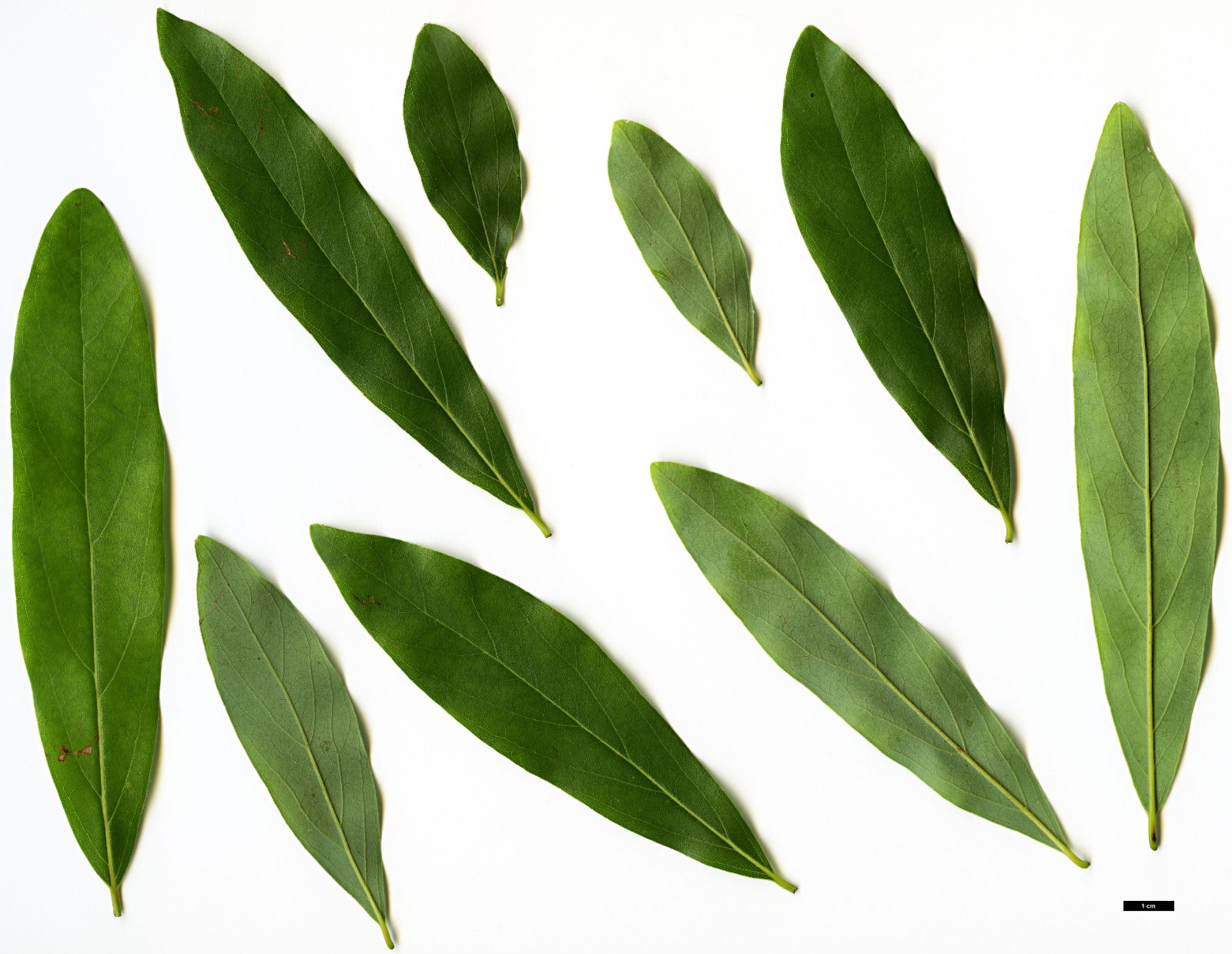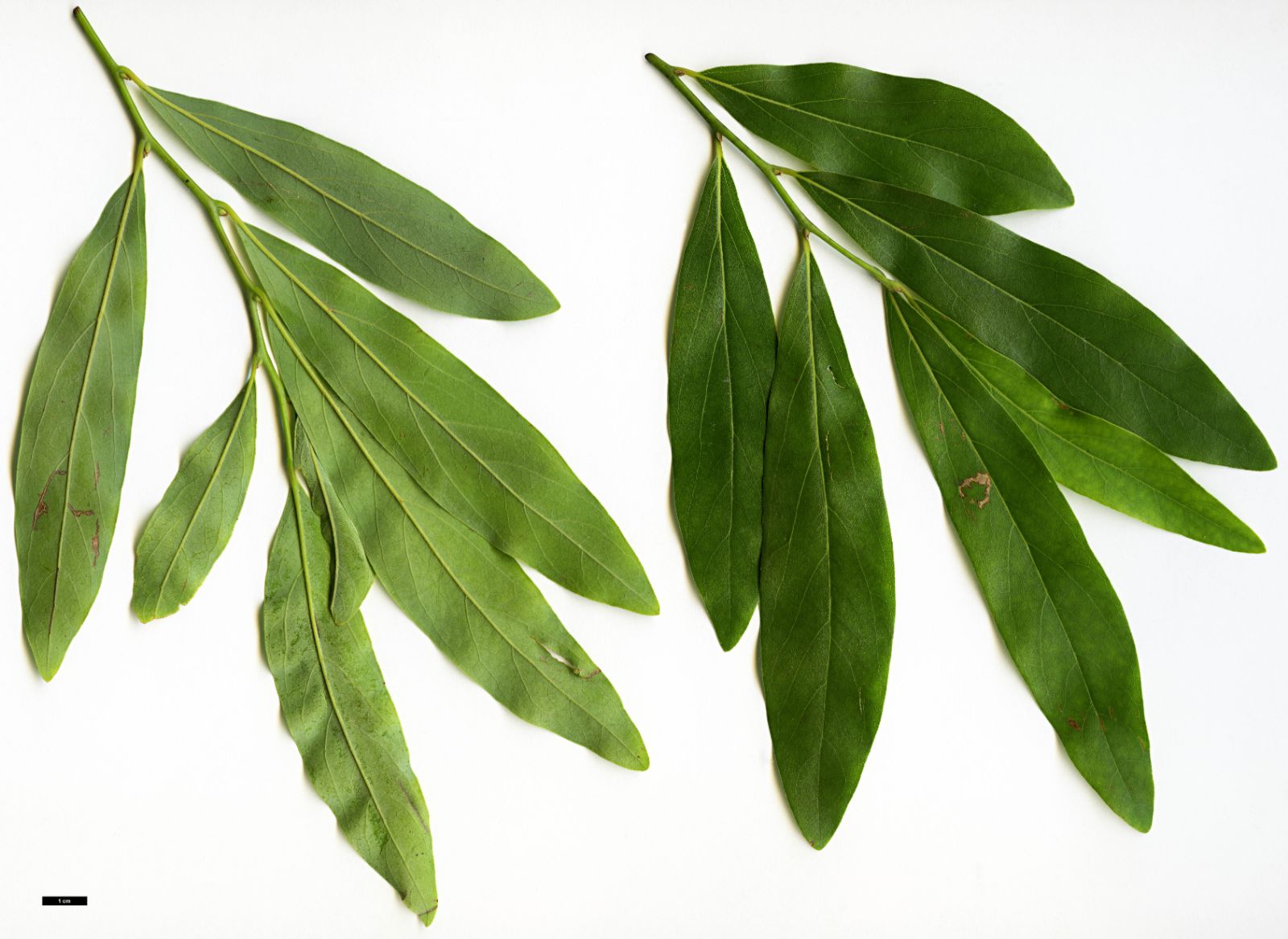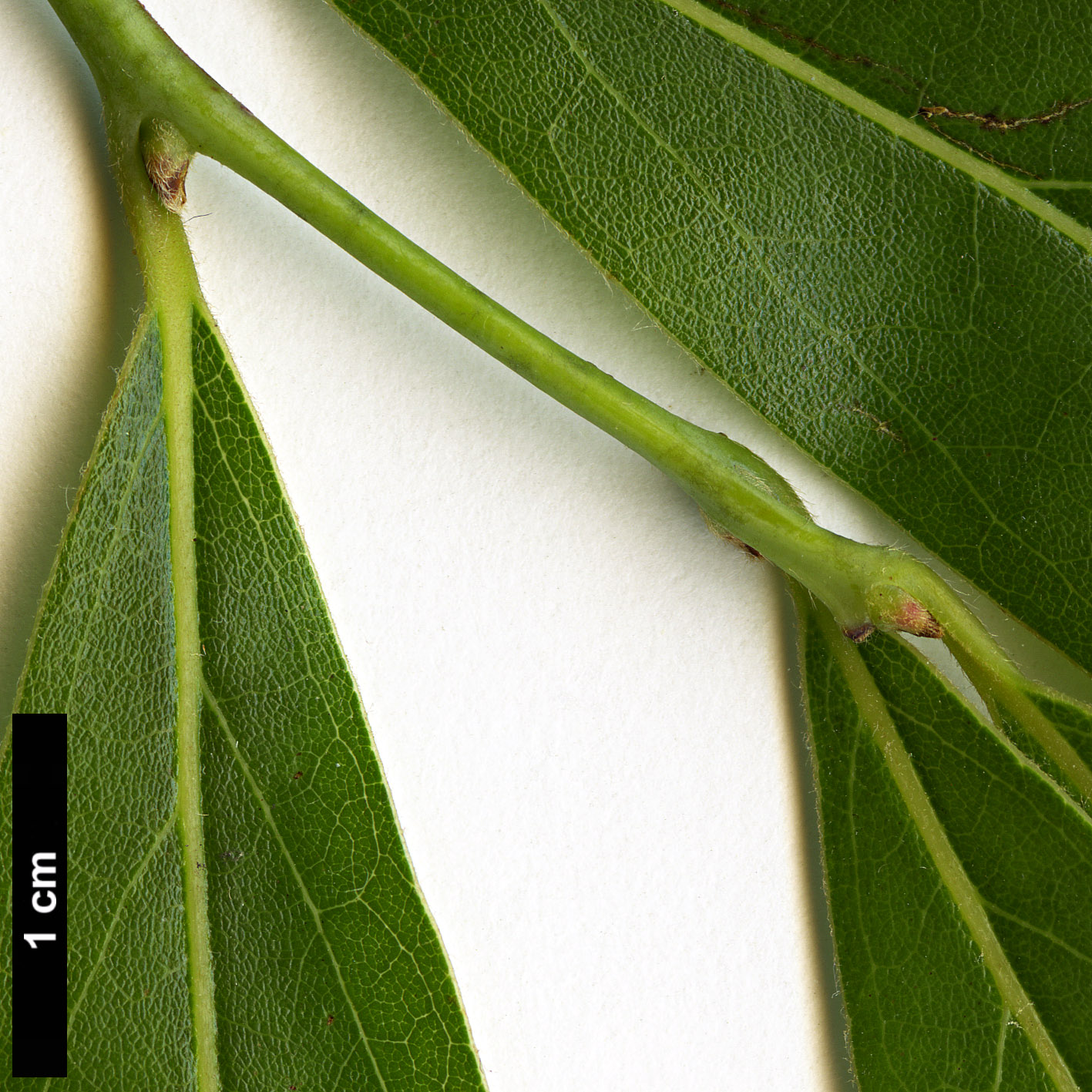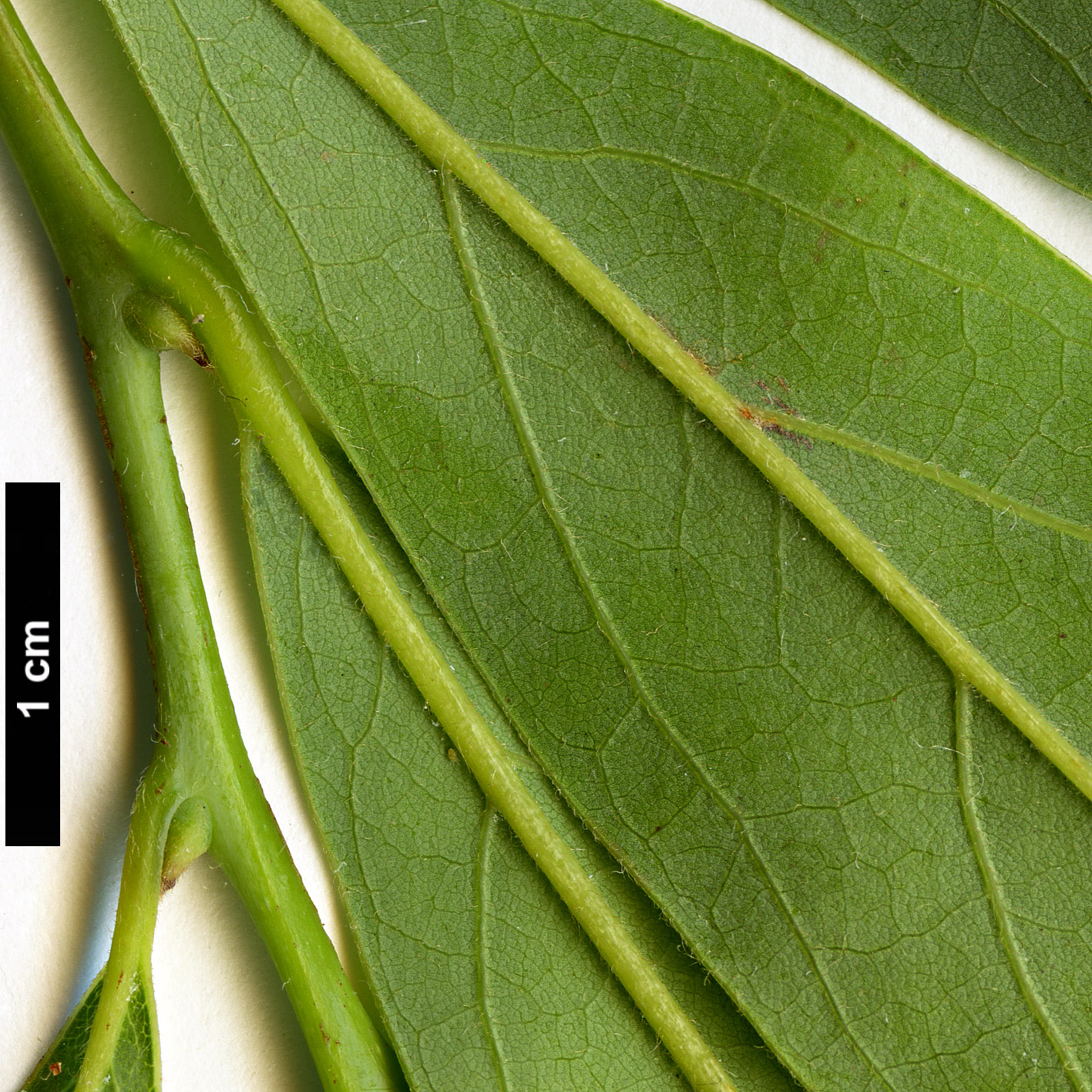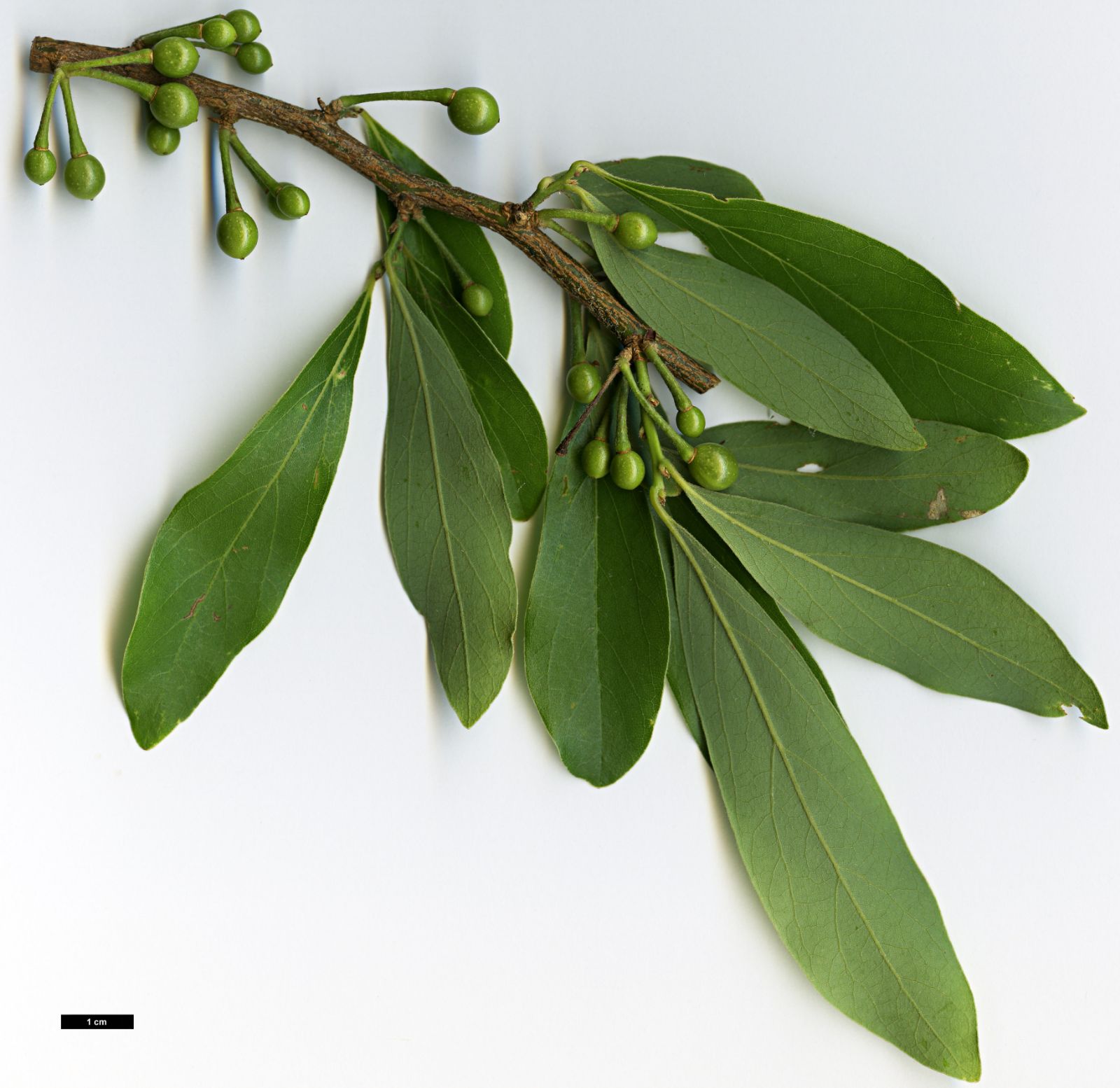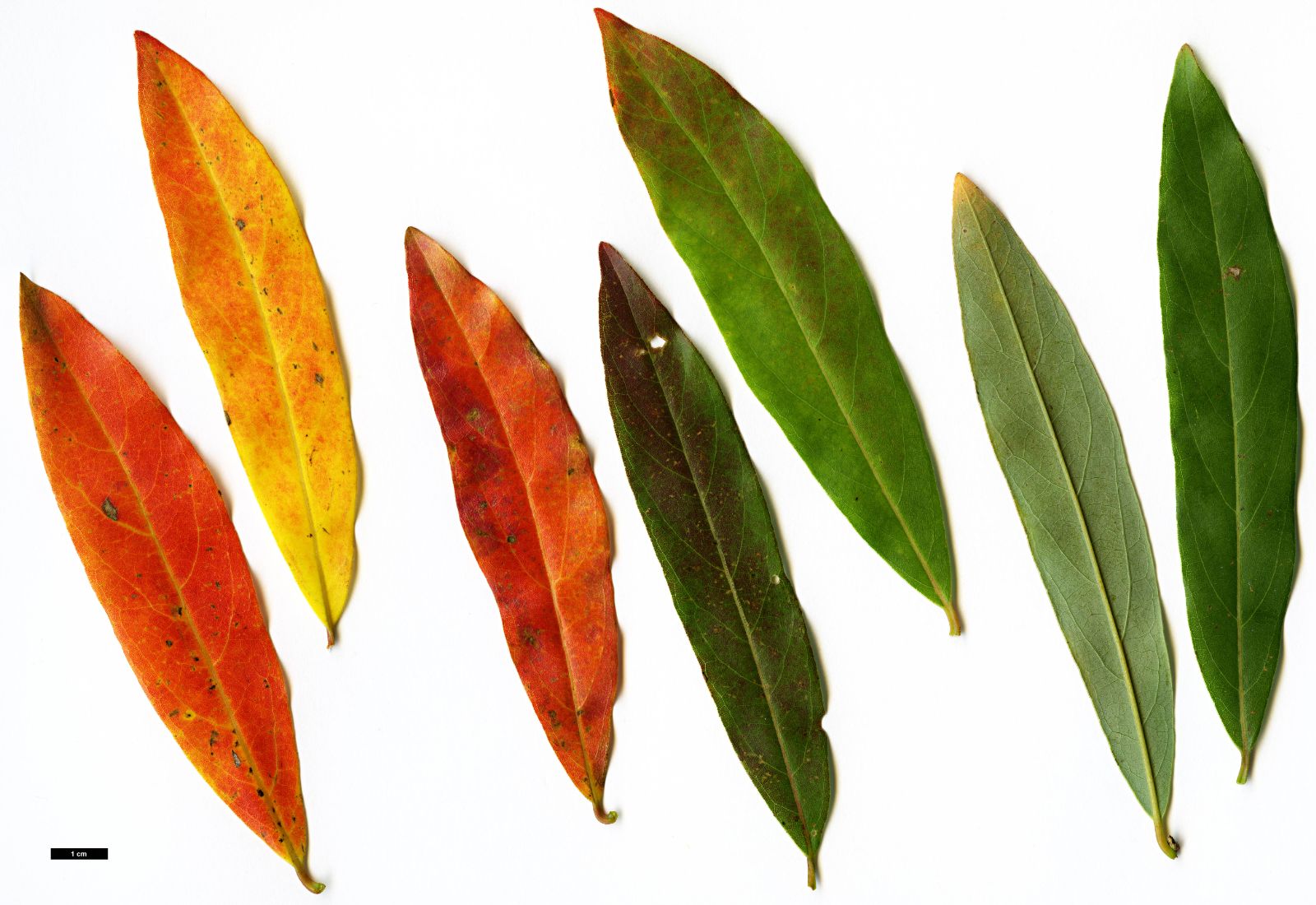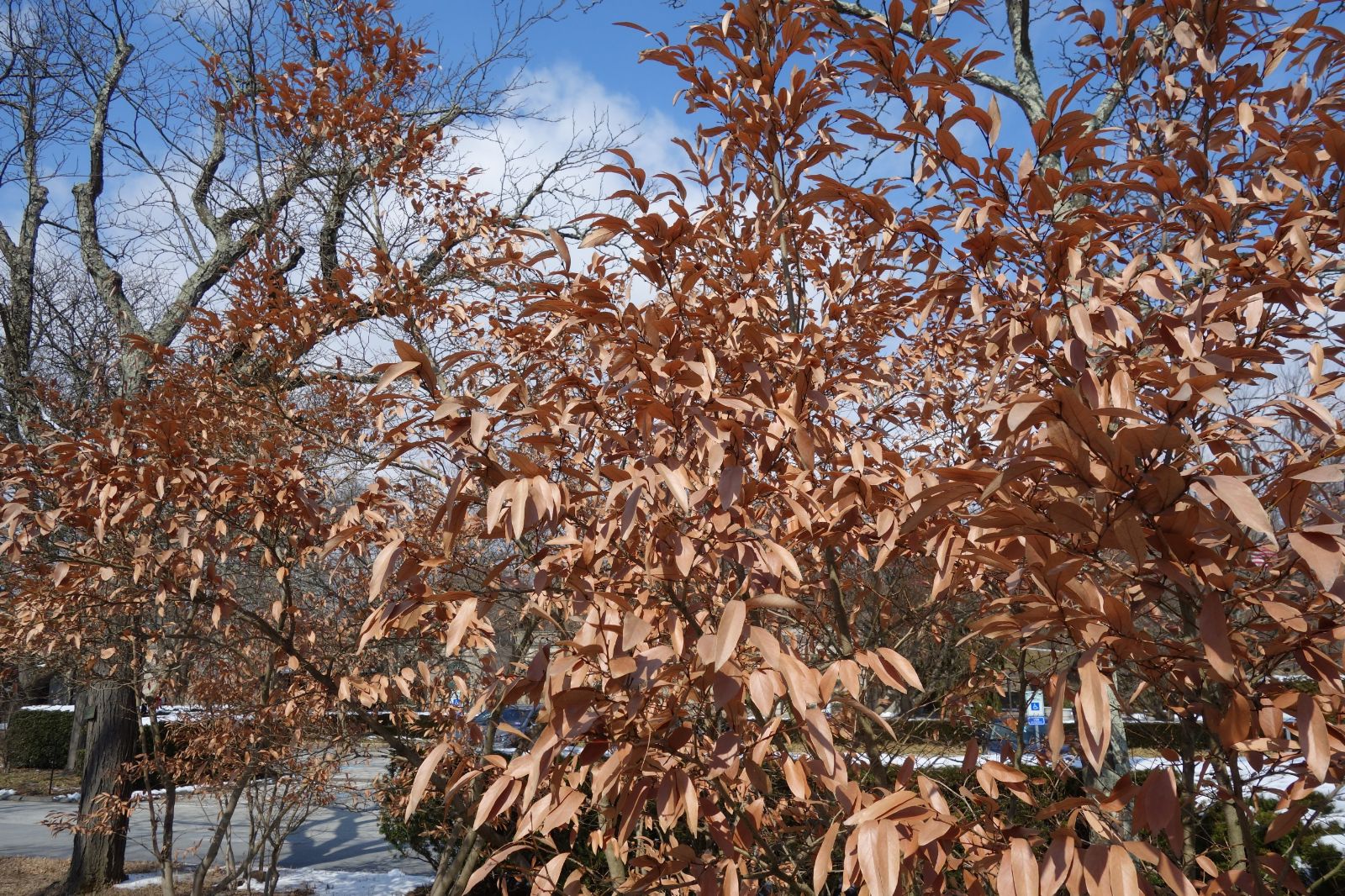Lindera angustifolia
Sponsor
Kindly sponsored by
a member of the International Dendrology Society
Credits
Julian Sutton (2023)
Recommended citation
Sutton, J. (2023), 'Lindera angustifolia' from the website Trees and Shrubs Online (treesandshrubsonline.
Genus
Synonyms
- Lindera salicifolia (T.B. Lee) C.M. Pak
Other taxa in genus
- Lindera aggregata
- Lindera akoensis
- Lindera assamica
- Lindera benzoin
- Lindera chienii
- Lindera communis
- Lindera erythrocarpa
- Lindera floribunda
- Lindera fragrans
- Lindera glauca
- Lindera megaphylla
- Lindera melissifolia
- Lindera metcalfiana
- Lindera neesiana
- Lindera obtusiloba
- Lindera praecox
- Lindera pulcherrima
- Lindera reflexa
- Lindera rubronervia
- Lindera sericea
- Lindera tonkinensis
- Lindera triloba
- Lindera umbellata
Deciduous shrub or small tree to 8 m. Young branchlets yellow-green, glabrous. Winter buds ovate; bud scales keeled. Leaves pinnately veined, with 8–10 pairs of lateral veins; blade elliptic-lanceolate, 6–14 × 1.5–3.5 cm, laxly hairy on the veins beneath beneath; base cuneate; margin entire; apex acuminate. Umbels 2 or 3 at the base of each winter bud, the male with 3–4 flowers, female with 2–7. Flowers with 6 tepals; males with 9 fertile stamens; females with 6 staminodes, 1 mm style and capitate stigma. Fruit black at maturity, globose, about 8 mm across. Flowering March–April (China); fruiting September–October (China). (Cui & van der Werff 2008).
Distribution China Anhui, Fujian, Guangdong, Guangxi, Henan, Hubei, Jiangsu, Jiangxi, Shaanxi, Shandong, Zhejiang North Korea South Korea
Habitat Thickets or sparse forests on mountain slopes.
USDA Hardiness Zone 5-9
RHS Hardiness Rating H5
Conservation status Least concern (LC)
Although its naming has been confused, Lindera angustifolia is becoming quite a familiar plant in North American gardens (less so in Europe), especially for autumn and winter foliage effect. It suits sunny or part-shaded positions (Missouri Botanical Garden 2023).
This species has been confused in cultivation with its close relative L. glauca, with the probably invalid name L. salicifolia further muddying the waters (see below). L. salicifolia is the most frequently seen name in Western gardens, but in practice L. angustifolia seems to be by far the commoner plant, whichever of the three names it is grown under. L. angustifolia and L. glauca are very similar species, with deciduous, pinnately veined leaves. They are distinguished from others we describe in that group by the inflorescences being sessile or almost so (peduncles less than 3 mm) (Cui & van der Werff 2008). Both species have papery textured leaves, somewhat glaucous below (Grimshaw & Bayton 2009). L. angustifolia has distinctly narrower leaves, lanceolate or oblong-lanceolate as opposed to obovate-elliptic in L. glauca (Allen 1941); L. angustifolia has only been recorded in China and Korea, while L. glauca has a wider distribution. Also, at least in Chinese material, L. angustifolia has glabrous young branchlets, while in L. glauca they have brown hairs, at least initially (Cui & van der Werff 2008). After reviewing the literature, Shaw (2013) concluded that Korean material (which had sometimes been called L. salicifolia, an invalid name in this context) has glabrous leaves, while Chinese material has hairs, at least towards the apices and persisting on the main veins. He distinguished the Korean plant as var. glabra (Nakai) J.M.H. Shaw. Whether botanists in the region will take up this distinction remains to be seen. It is certainly worth checking this character in all cultivated stocks: the fact that they have usually been labelled L. salicifolia (a name used by Korean botanists) might imply a Korean provenance.
In China, the leaves are processed for their aromatic oil, seed oil is used for making soap and machine oil (Cui & van der Werff 2008), uses in line with many other linderas.
In practice, Lindera angustifolia forms a large multistemmed shrub; with firm pruning or dense low competitors a single stem might be achievable (Grimshaw & Bayton 2009). The foliage (‘graceful to the core’ – Blackhall-Miles 2014) is unremarkable in colour during the summer, pale mid-green above and rather dully glaucous below, but in autumn it turns to magnificent shades of pumpkin-orange and red. Andrew Bunting of the Scott Arboretum, PA, regards it as ‘the best fall color of any tree or shrub’ (pers. comm. 2006) – before fading to tan, and then persisting on the plants through the winter. This is itself a valuable feature of the species, admired by those who value winter effects, and not only visual ones. Dan Hinkley (Heronswood Nursery Ltd. 1999) writes of enjoying the ‘clatter’ of the dry leaves as they rustle in the wind. The fruits are black and (at least in stocks labelled L. salicifolia) freely produced. The garden stock can be relied upon to produce shiny black fruit, even when a single clone is present; it is said to be monoecious (A. Aiello, pers. comm. 2006), but it is worth bearing in mind the possibility of apomixis, which is the norm in wild Japanese L. glauca (Nakamura et al. 2021).
Confusion around naming makes it hard to pinpoint when this plant was first introduced. By the time it had been assessed at the JC Raulston Arboretum, NC (as L. glauca, but the description is clear – Raulston 1993) no origin was given, unlike several rare linderas. The wild collection KNW 409 (USNA, NW South Korea, 1984) has narrow leaves; it is grown at the US National Arboretum (as L. angustifolia var. glabra) and at UBC Botanical Garden as L. glauca (University of British Columbia 2023). Well established in the North American nursery trade, this is still an uncommon shrub in Europe, although introduced by the 1980s. A specimen planted in 1989 at the Yorkshire Arboretum, UK was obtained from Hampshire nurseryman Peter Catt (Yorkshire Arboretum 2023). In Belgium it is recorded from a few major collections, including Meise Botanic Garden and Arboretum Wespelaar (Plantcol 2023). This is clearly a somewhat overlooked species in Europe.

